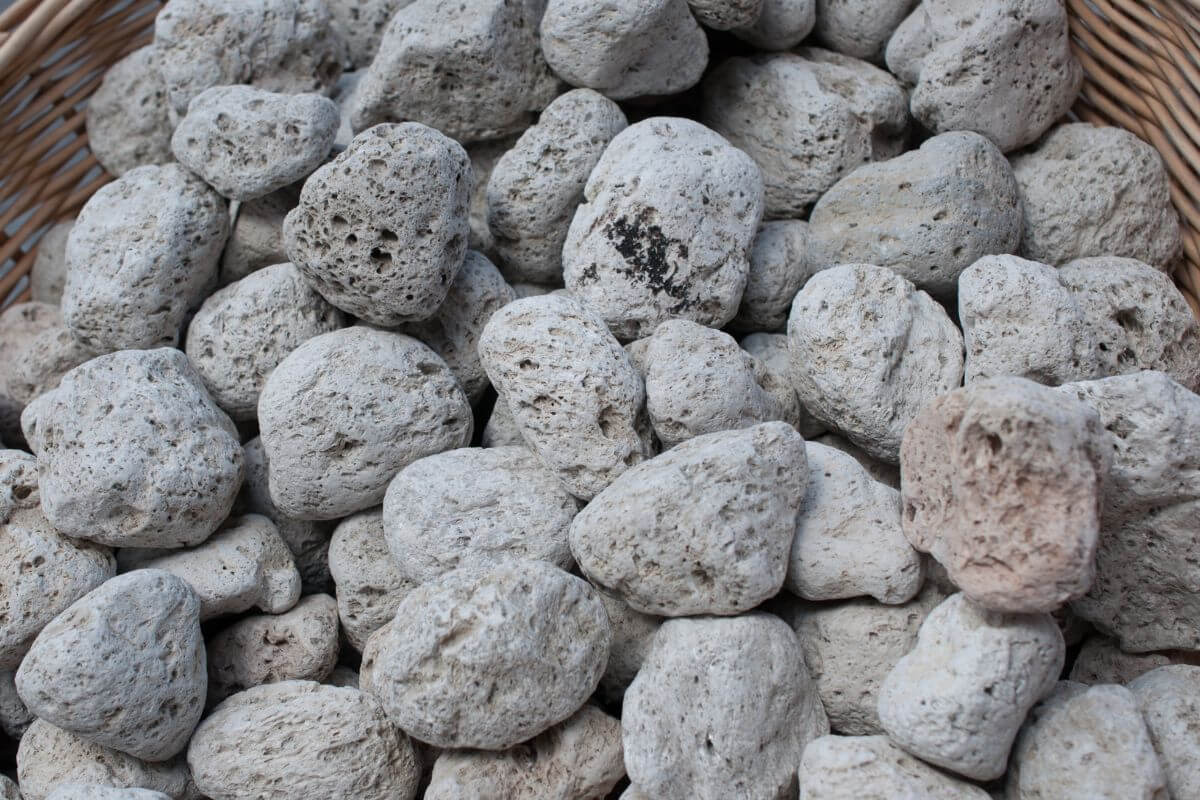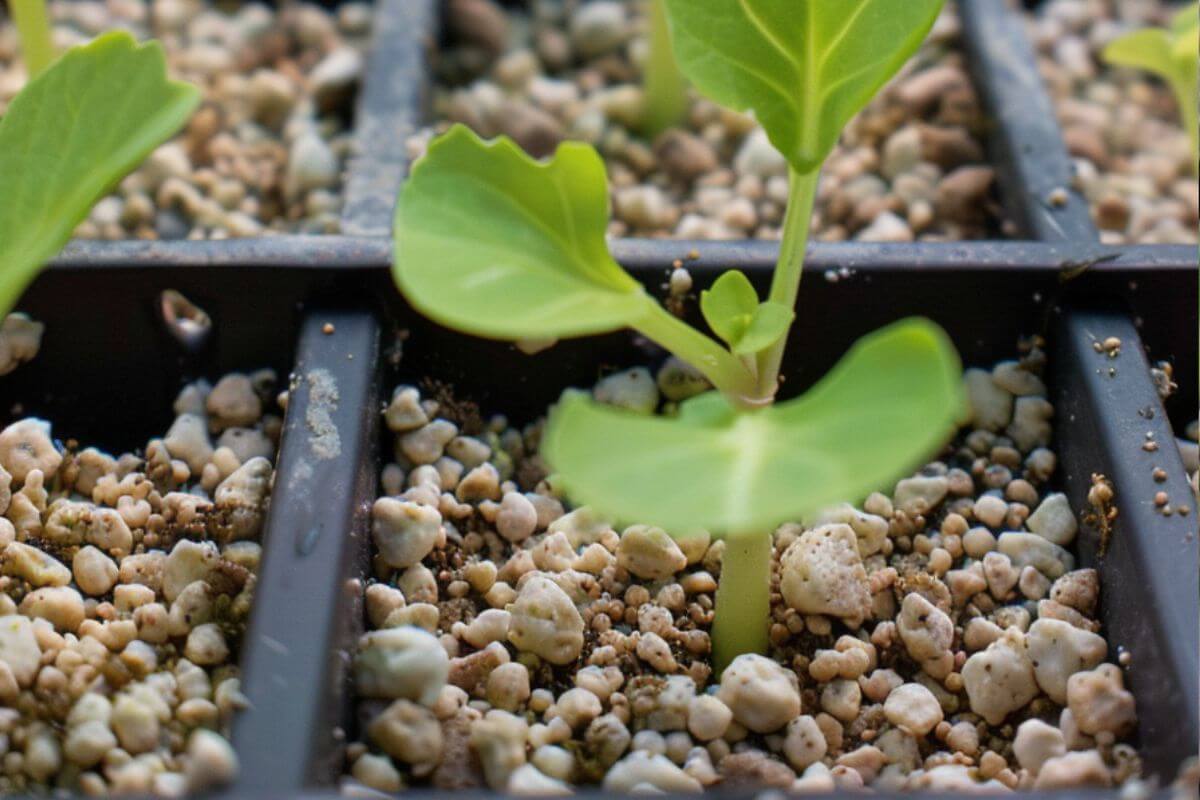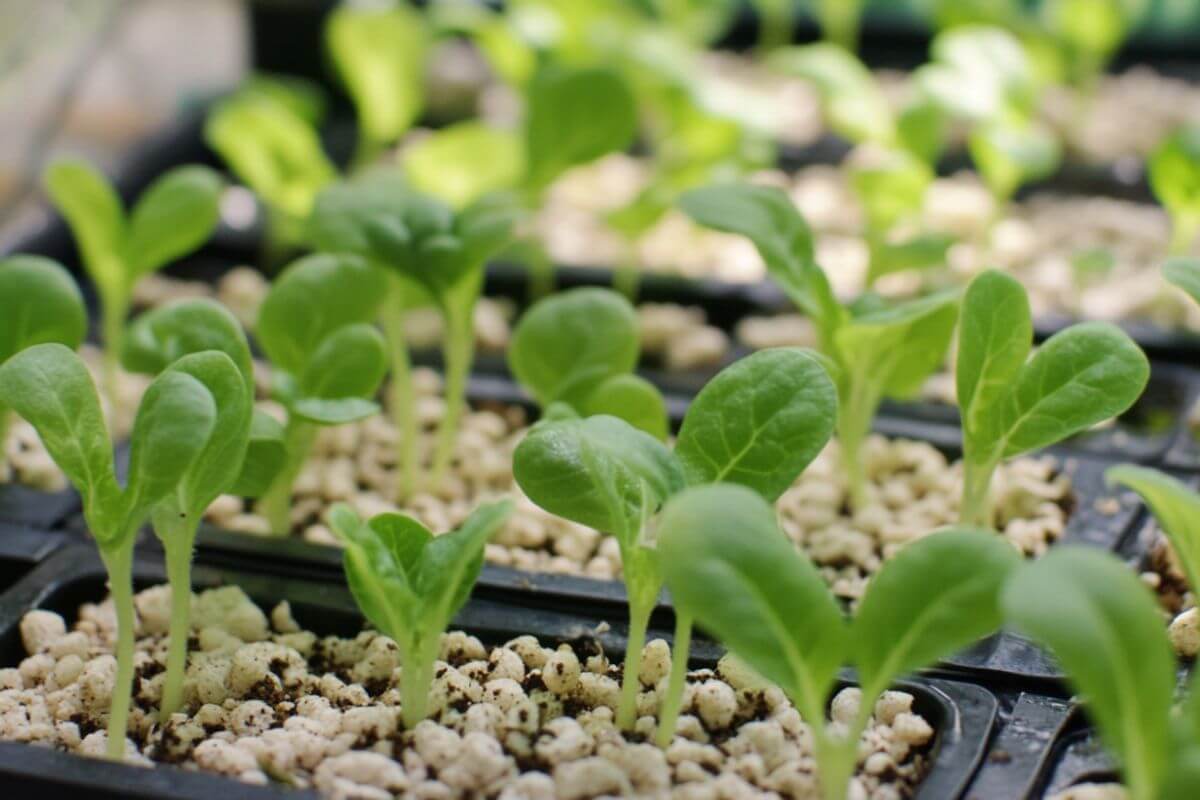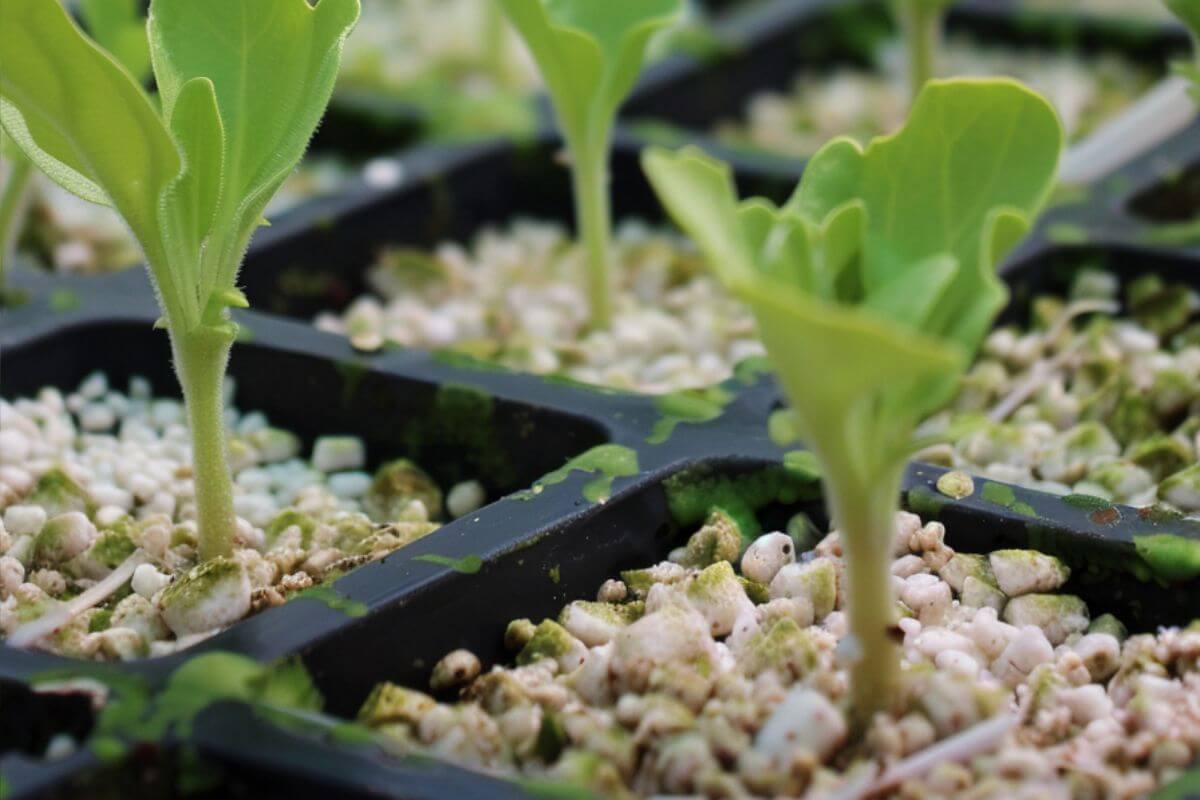Different growing mediums can be utilized in various hydroponic systems.
Pumice is a commonly used growing medium due to its properties of being lightweight, inert, and porous. Unlike, most growing medium, hydroponic Pumice occurs naturally and is environmentally-friendly.
- Related article: Cheap Growing Medium for Hydroponics
We will examine the tips, advantages, and drawbacks of utilizing Pumice in a hydroponic setup.
Before proceeding, we will examine the composition of Pumice and its advantages for hydroponic cultivators!
What is Pumice

Pumice is formed from volcanic rock that has a white, foamy appearance. This nature of Pumice is given when the material is ejected from the volcano and begins to cool down.
Volcanic Pumice occurs in the sand, sourced from the surrounding areas of Mount Pinatubo.
This growing medium is often mixed with alternative growing mediums such as Vermiculite and Perlite as they add to its ability to retain water.
Benefits of Pumice as a Growing Medium

When deciding on which growing medium to use, there are a lot of considerations that one must consider.
Let’s take a look at some of the benefits of using Pumice in a hydroponic system:
Water Retention
One key factor which sets growing mediums apart from the rest is their nutrient holding capacity and water.
A growing medium that is able to retain nutrient-rich water for a substantial amount of time will be able to supply the plants roots with nutrients on demand.
Pumice is riven with tiny holes that capture moisture and provide it to the plant when needed.
The porous reservoirs in the Pumice accommodate microbiomes that will assist the plant’s development and growth.
Drainage
Water retention goes hand-in-hand with adequate drainage. Even though a growing medium must be able to store water, excessive amounts of water must be drained off.
As mentioned above, Pumice has tiny pores in its texture. There are smaller holes that retain moisture, while there are bigger holes that has proper drainage capacity.
The different shapes and sizes of each of these stones prevent the growing media from pacting together, creating a better drainage system
Reuse
There’s no use in using a growing medium that can only be used once. What makes a growing medium beneficial is when it can be constantly reused from season to season.
Pumice is a long-lasting growing material that can be used for multiple years.
Simply remove the growing substrate from a hydroponic container, rinse the Pumice off, and then it can be reused.
Aeration
Pumice is often added to soil as a means to give it some aeration. The porous nature of the substance gives is exceptional aeration abilities.
This growing medium is lightweight and allows the delicate roots of a hydroponic plant to absorb oxygen and nutrients.
Lightweight
Growing mediums can be rather clumpy and tend to clog up the water filters in a hydroponic system.
However, on the other hand, Pumice is a lightweight substrate, and will still maintain itself. Hydroponics growers don’t often complain about Pumice stones clogging up their filters.
This lightweight by-product of volcanic rock is one of the best hydroponic growing mediums available.
Disadvantages of Pumice as a Growing Medium

There are also several disadvantages of using Pumice in a hydroponic system.
We’ve listed several of the disadvantages experienced with using Pumice as a growing medium:
Pricier than it’s Competitors
When deciding on which growing medium to use, the price is often a major consideration.
Pumice is an inexpensive growing medium, however, there are some similar competitors, such as Perlite, that are far cheaper to purchase.
High Levels of Sodium
Similar to Coco Coir, Pumice can contain high levels of sodium. This sodium will first need to be bleached from the Pumice before the pit can be used as a growing medium.
High levels of sodium will prevent nutrients and water intake for plants and will result in them dying.
Less Water Retention
Pumice has larger pores and it doesn’t retain as much moisture as other growing mediums such as Vermiculite.
Although it has exceptional drainage abilities, you will frequently need to water your plants to avoid their roots from drying up.
It also lacks Cation exchange capacity to hold much nutrients for plant uptake as needed.
Tips for Using Pumice in Hydroponics

Using a hydroponic system can be challenging for some—adding the right amounts of growing medium to each planting container, making sure the water levels are correct, there are several things one has to remember.
We’ll take a look at some tips when using Pumice in hydroponics:
Rinse and Wash Pumice
Remove the Pumice from its packaging and thoroughly finish and wash the stones.
Pumice contains high levels of sodium, and by washing them, you will lower the levels of sodium in your hydroponic system.
Apply the First Layer of Pumice
When using a Pumice in a hydroponic system, it is easier to transplant seedlings than to plant seedlings in Pumice.
When transplanting seedlings into your growing pod, cover the bottom layer of the pod first with Pumice.
Make sure there is sufficient space on the sides of the pod that haven’t been covered by Pumice.
Place the root ball of the plant species inside the pod, then proceed to gently surround the roots of the plant with the remaining Pumice rocks.
You may have to flex the pod to allow the Pumice to cover all the empty spaces.
Add Nutrient Water
After rinsing off your Pumice, add nutrient water to your Pumice before planting your hydroponic seedlings. The added nutrients will give your plants a boost and ensure they grow faster.
Add Aquarium Rocks
As the top layer of Pumice begins to be exposed to the constant watering and sunlight, it will begin to fade in color and start to turn brown.
The white aquarium rocks provide a white covering for the discoloring rocks. If you have an overlaying plant, there is no need to add aquarium rocks as the plant will cover the base.
Final Thoughts on Pumice Hydroponic Growing Medium
Hydroponic Pumice is a growing medium that is highly versatile and efficient for indoor gardening in modern times.
The unique properties of this substance make it well-suited for use in hydroponic systems due to its excellent drainage, high water retention capabilities, and pH balancing abilities.
Hydroponic Pumice is a viable option to consider for growing needs, whether you are a commercial grower or a hobbyist.
Using this natural Pumice in your hydroponic setup can result in a thriving garden with healthier plants and increased yields.
Consider exploring the benefits of hydroponic Pumice to improve the sustainability and success of your indoor garden!
Take a look at these awesome reads to learn more about various hydroponic medium to grow plants in:


